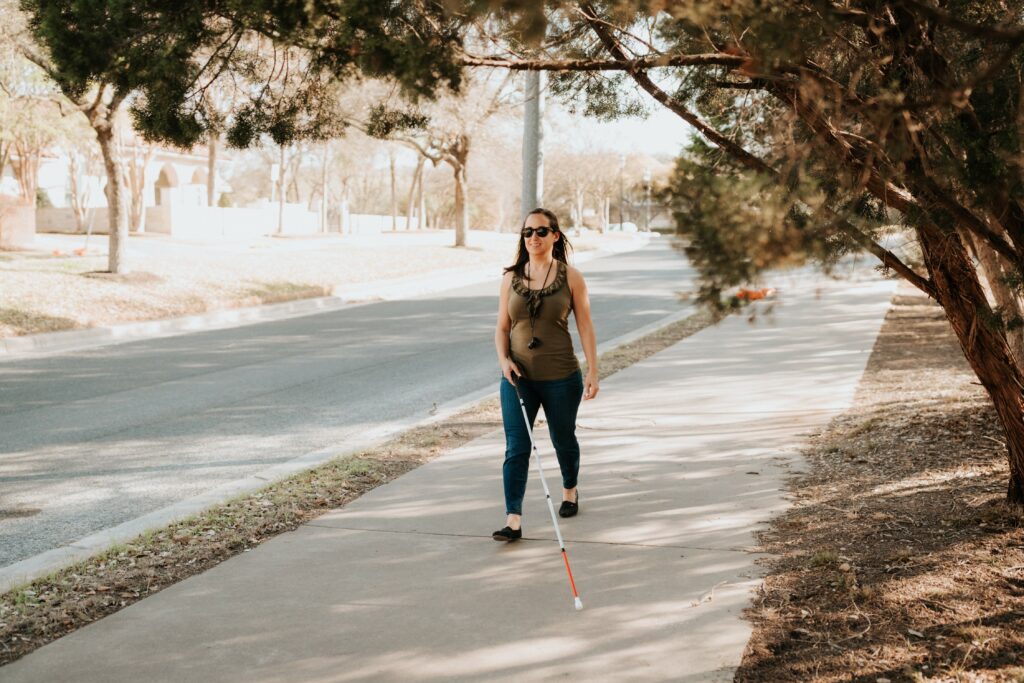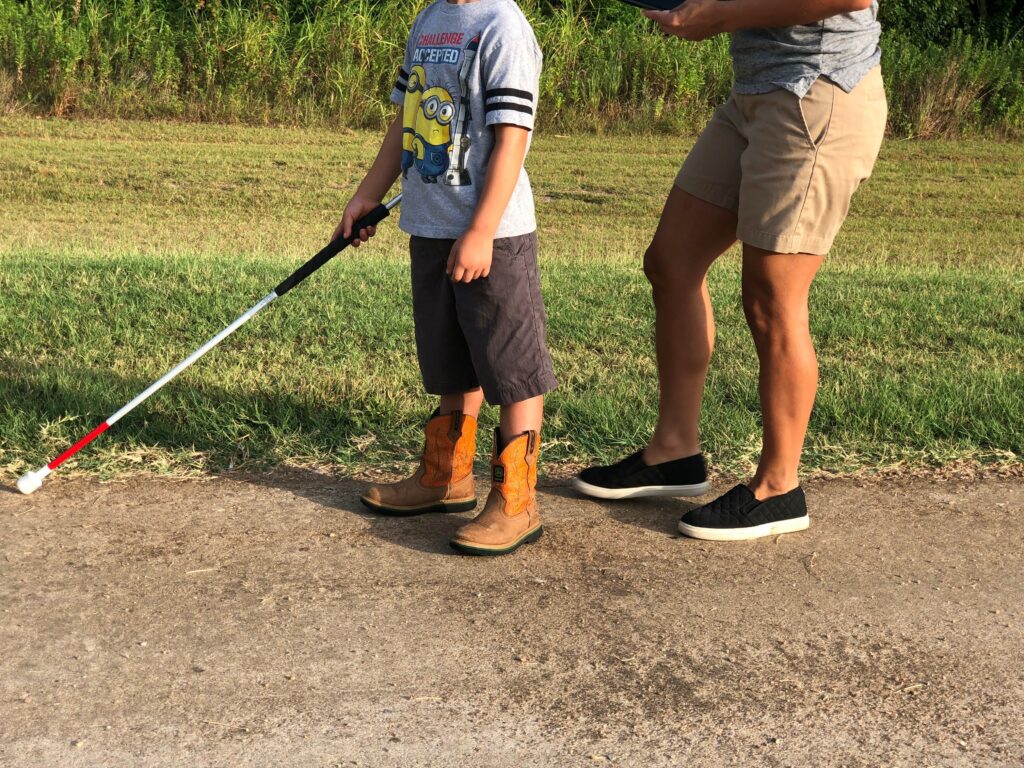This content is also available in:
Español (Spanish)
Orientation & Mobility (O&M) training is essential so people who are blind or low vision can move through life independently at every age. O&M specialists are trained to help people “know where they are in space and get where they want to go safely,” says Kassandra Maloney, an O&M specialist and founder of Allied Independence, a professional development organization for O&M specialists.
O&M began with veterans
As the U.S. recognizes Veterans Day on November 11, it’s noteworthy that O&M began during and immediately following World War II. Soldiers who had lost their vision in battle were provided with care, but the military recognized the need for specialized services.
Richard E. Hoover, an army sergeant, was assigned to the center for the treatment of blinded soldiers at Valley Forge Army Hospital in 1944, where the O&M profession began. He believed the traditional strategies taught for independent travel were simply not good enough for the soldiers who were highly motivated to succeed. It inspired him to develop a technique for using a cane that’s lighter and longer than those used to support weight – both of which revolutionized independent travel for people who are blind or have low vision, and are still used today.
The evolution of O&M
Since World War II, the field of O&M has expanded far beyond the use of a white cane, although that’s still a fundamental principle of O&M training.
“What we teach our learners depends on who they are and where they want to go,” says Kassandra. “If it’s a baby, they’re learning how to roll over. If it’s a business executive, it might be how to travel to Fiji for a project. We teach in the environment that’s needed for the learner.”
O&M training often begins with body awareness – knowing where their body is in space. Next, an O&M specialist moves on to teaching basic skills like trailing the wall with their hand, so they can get around in an enclosed space in any situation, Kassandra explains. After learning to navigate an enclosed environment like their home, school, or work, O&M learners are then taught how to navigate broader environments, such as neighborhoods and cities, as well as the advocacy that goes along with that.
“An occupational therapist once told me, ‘The way you walk, the way you move in the world, creates your self-identity in the world,’” Kassandra says. “As O&M specialists, one of the joys of our job is to help our learners realize new identities.”
A fresh take on O&M

As seriously as she takes her work, Kassandra has a unique way of approaching O&M. When working with learners, she asks them: “What is your best Beyonce life? What does that look like?”
For example, she’s working with a 14-year-old who is just starting her O&M journey, which began with identifying her goals. For this young woman, her “best Beyonce life” looks like ordering takeout and working from home with her cat.
“Before every class, I remind her and every learner that I’m going to challenge them to step into a new version of who they are – we all have to do that every once in a while,” Kassandra says. “And O&M can allow people to step into the fullest version of themselves.”
What’s more, O&M isn’t like going to school, where you study a subject and then you’re finished. As people grow and become more independent and their lives change, they need different skills for different environments.
“You wouldn’t teach the same skills to an 8-year-old that you would to a 16-year-old because their goals are different,” Kassandra explains. “Whether someone was born blind or is losing their vision later in life is also going to make a difference in what we teach.”
She adds that O&M emphasizes teaching someone about their future self. “Our goal is that our learners won’t need us anymore, because they’ll be fully independent,” Kassandra says.
Different life stages, different avenues to O&M

When children are diagnosed with vision loss at an early age, they generally get O&M training through their school, which sometimes means transferring to a school that offers it as part of the curriculum. Otherwise, it can be difficult to get insurance to pay for the training.
It’s more challenging to find O&M training in adulthood, and where to seek it out is different in every state. Kassandra suggests checking area rehabilitation centers, veterans’ associations – who may offer referrals to other agencies to non-veterans – or of course the U.S. Department of Veterans Affairs if someone is a veteran. Area Lighthouse organizations can be a good resource, too. Check out the APH ConnectCenter Directory of Services to search for a specialist in your area.
There’s also APH ConnectCenter’s Information and Referral Line. The trained specialists there are great problem solvers who can help you find area O&M specialists. They can be reached weekdays from 8am to 8pm ET at 1-800-232-5463 or any time via email at [email protected].
Kassandra points out that as older adults lose their vision, they may experience anger or refuse assistance like O&M training. Although it can be challenging, she urges their family members to be patient – and remind their loved ones how empowering O&M can be.
“O&M is really about being the best version of yourself,” she says. “In the United States, independence is one of the top values we strive for. And O&M specialists are specifically trained in helping people who are blind or low vision overcome the obstacles they face. It’s a challenge, and people need support to move past their comfort zone because growth doesn’t happen in anyone’s comfort zone.”